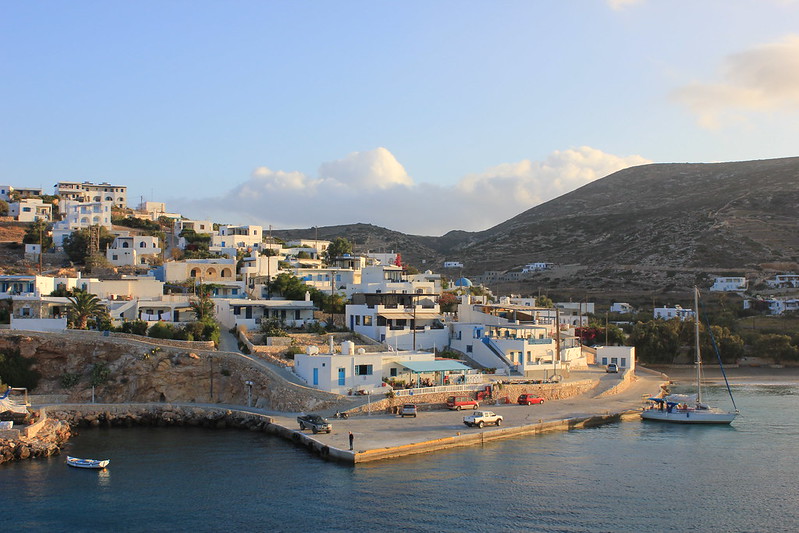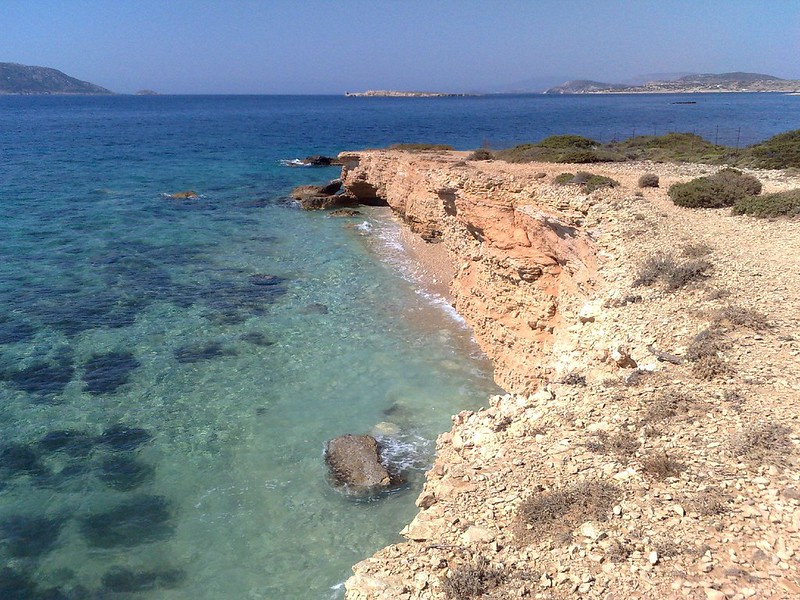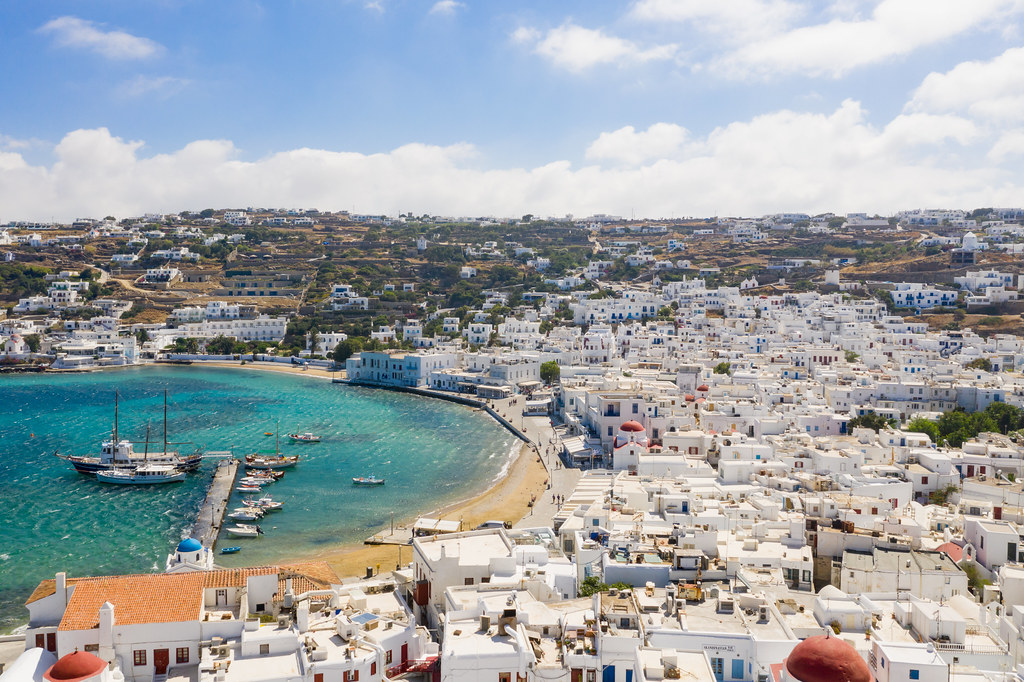Located in the Cyclades islands of Greece, Amorgos is a beautiful and serene island that offers visitors a glimpse of authentic Greek island life. From ancient ruins to stunning beaches, there is no shortage of things to do and see on this enchanting island. In this article, we will explore the main tourist sites, best beaches, best restaurants, and best places to stay on the island, as well as the ferry services to other nearby islands.
History of Amorgos
The Greek island of Amorgos is steeped in history, with evidence of human habitation dating back to the Early Bronze Age. The island has been inhabited by a variety of different civilizations over the centuries, including the Minoans, the Romans, the Byzantines, and the Venetians. Here is a timeline of the island’s history, highlighting some of the key events and developments that have shaped Amorgos into the vibrant and unique destination that it is today.
Early History
- 3000 BCE: Archaeological evidence suggests that the island of Amorgos was first settled during the Early Bronze Age, around 3000 BCE. The first inhabitants were likely farmers and fishermen who made their living off the fertile soil and abundant fish in the surrounding waters.
- 2000 BCE: During the Middle Bronze Age, the Minoans, who were based on the nearby island of Crete, established a trade network with Amorgos. They exported their pottery, textiles, and other goods to the island, and in exchange, received metals and other raw materials.
- 1500 BCE: By the Late Bronze Age, the island of Amorgos had developed a thriving economy based on agriculture, fishing, and trade. The island was ruled by a series of local chieftains, who maintained close ties with the Minoans and other civilizations in the Aegean region.
Classical Period
- 700 BCE: During the Archaic Period, the island of Amorgos became a member of the Delian League, an alliance of city-states led by Athens. The island contributed ships and soldiers to the League’s military campaigns, and in exchange, received protection and other benefits.
- 490 BCE: During the Persian Wars, the island of Amorgos played a minor role in the conflict, with its ships participating in the naval battle of Marathon.
- 5th-4th centuries BCE: The Classical Period saw the rise of the Athenian Empire, which exerted a significant influence on the island of Amorgos. The island was home to a number of temples and sanctuaries dedicated to the gods, and it became a popular destination for pilgrims from across Greece.
Byzantine and Venetian Periods
- 330 CE: The Byzantine Empire was established after the Roman Empire was divided into two parts. Amorgos became a part of the Byzantine Empire, and the island’s economy and culture continued to flourish.
- 1207 CE: After the Fourth Crusade, the Venetians established a presence in the Aegean region, including on the island of Amorgos. The Venetians built a number of castles and fortifications on the island, and they controlled it until the Ottoman Empire conquered it in the 16th century.
Modern History
- 1821-1832: Amorgos, along with the rest of Greece, fought for independence from the Ottoman Empire during the Greek War of Independence. The island was heavily involved in the conflict, and many of its residents played key roles in the rebellion.
- 20th century: In the decades following Greek independence, Amorgos experienced significant economic and social changes. The island’s population grew rapidly, and new industries such as tourism and agriculture emerged as key drivers of the local economy.
Today, Amorgos is a popular destination for tourists from around the world, drawn by its rich history, stunning beaches, and traditional way of life. From its ancient ruins to its modern-day amenities, the island offers a unique blend of past and present that is sure to delight visitors of all ages and interests.
Main Tourist Sites
One of the most popular tourist sites on the island is the Monastery of Panagia Hozoviotissa, which dates back to the 11th century. Built into the side of a cliff, the monastery is an impressive sight to behold, and visitors can climb the steep steps to reach the top and enjoy the breathtaking views of the Aegean Sea.
Another must-see attraction on Amorgos is the Ancient Minoa, which was once a thriving civilization that dates back to the 5th century BC. Visitors can explore the ruins of the city, including the ancient walls, cisterns, and tombs.
For those who want to experience the local culture and architecture, the Chora is a charming village that is a maze of narrow alleys, whitewashed houses, and colorful bougainvillea. Visitors can wander the streets, explore the many shops and cafes, and admire the traditional architecture of the village.
The Archaeological Museum of Amorgos is also worth a visit, as it houses a collection of artifacts from the ancient civilization of Minoa, as well as other historic periods on the island. From pottery to jewelry, the museum offers a fascinating insight into the island’s rich history.
Finally, no trip to Amorgos is complete without a visit to the Agia Anna Beach. This stunning cove is surrounded by turquoise waters and rocky cliffs, making it the perfect spot for swimming, sunbathing, and relaxation.
Best Beaches
In addition to Agia Anna Beach, Amorgos is home to a variety of other stunning beaches that are worth exploring. Agios Pavlos Beach is a secluded spot that is surrounded by wild landscapes and offers crystal-clear waters, making it an excellent spot for snorkeling and diving.
Mouros Beach is another picturesque cove that is surrounded by towering cliffs and offers a tranquil and secluded spot for swimming and sunbathing.
Kalotaritissa Beach is a long and sandy beach that is perfect for families with young children, as it offers shallow waters and plenty of space for playing and relaxing.
Maltezi Beach is a pebbly beach that is surrounded by dramatic cliffs and offers a stunning spot for watching the sunset over the Aegean Sea.
Best Restaurants
Amorgos is known for its delicious cuisine, and there are plenty of excellent restaurants on the island that offer a variety of local and international dishes. To Limanaki is a popular spot that is located right on the beach and offers fresh seafood dishes, as well as traditional Greek cuisine.
Nikos Restaurant is another excellent spot that offers a variety of dishes made with locally-sourced ingredients, including fresh fish, meats, and vegetables.
Ambrosia is a charming restaurant that is located in the heart of the Chora and offers a cozy and intimate atmosphere, as well as a variety of Mediterranean-inspired dishes.
Frou-Frou is a trendy spot that is located in a beautifully restored old mansion and offers a range of dishes, including vegetarian and vegan options.
To Ouzeri tou Roussou is a traditional Greek taverna that is located in the Chora and offers a variety of traditional dishes, including grilled meats and seafood.
Best Places to Stay
Amorgos has a variety of accommodation options to suit all budgets and preferences. For those who want to immerse themselves in the local culture, staying in a traditional whitewashed house in the Chora is a great option. Many of these houses have been renovated and turned into guesthouses or vacation rentals, offering visitors an authentic Greek island experience.
For those who want to stay near the beach, there are plenty of hotels and resorts located along the coast, such as the Aegialis Hotel & Spa. This luxurious resort is located in the bay of Aegiali and offers stunning views of the Aegean Sea, as well as a variety of amenities such as a spa, fitness center, and swimming pools.
Another excellent option is the Lakki Village, which is a family-friendly resort located on the south coast of the island. The resort offers a range of accommodation options, including studios, apartments, and villas, as well as a swimming pool, restaurant, and bar.
Ferry Services to Other Islands
Amorgos is well-connected to other nearby islands in the Cyclades, making it an excellent base for exploring the region. The island has two ports: Katapola and Aegiali, which offer ferry connections to a variety of other islands, including Naxos, Santorini, and Mykonos.
There are also ferry services that connect Amorgos to the nearby islands of Koufonisia, Schinoussa, and Iraklia, which are smaller and less developed than the more popular tourist destinations in the Cyclades. These islands offer visitors a chance to experience a more relaxed and authentic Greek island lifestyle, with fewer crowds and more secluded beaches.
10 interesting facts about Amorgos
- Amorgos is located in the Cyclades, a group of Greek islands in the Aegean Sea.
- The island is named after the ancient Greek word for “long sand” due to its long and sandy beaches.
- According to Greek mythology, Amorgos was the birthplace of the god Apollo’s son, Aristaeus.
- The island has a long history, with evidence of human habitation dating back to the Neolithic period.
- Amorgos was a major center of the Cycladic civilization, which flourished in the Bronze Age.
- The island was ruled by various ancient Greek powers, including Athens and Sparta, and was later conquered by the Romans and the Byzantine Empire.
- During the Middle Ages, Amorgos was a target of pirate raids and was also occupied by the Venetians and the Ottoman Empire.
- Amorgos is home to several important historical and archaeological sites, including the Monastery of Hozoviotissa, which was built in the 11th century and is one of the most iconic landmarks on the island.
- The island is also known for its traditional crafts, including weaving and pottery.
- Today, Amorgos is a popular tourist destination, known for its beautiful beaches, crystal-clear waters, and charming villages.
Conclusion
Amorgos is a hidden gem in the Cyclades islands of Greece, offering visitors a chance to experience authentic Greek island life. From ancient ruins to stunning beaches, there is no shortage of things to do and see on this enchanting island. Whether you are looking to relax and unwind or explore the local culture and history, Amorgos has something to offer everyone.




One thought on “Things to do in Amorgos”